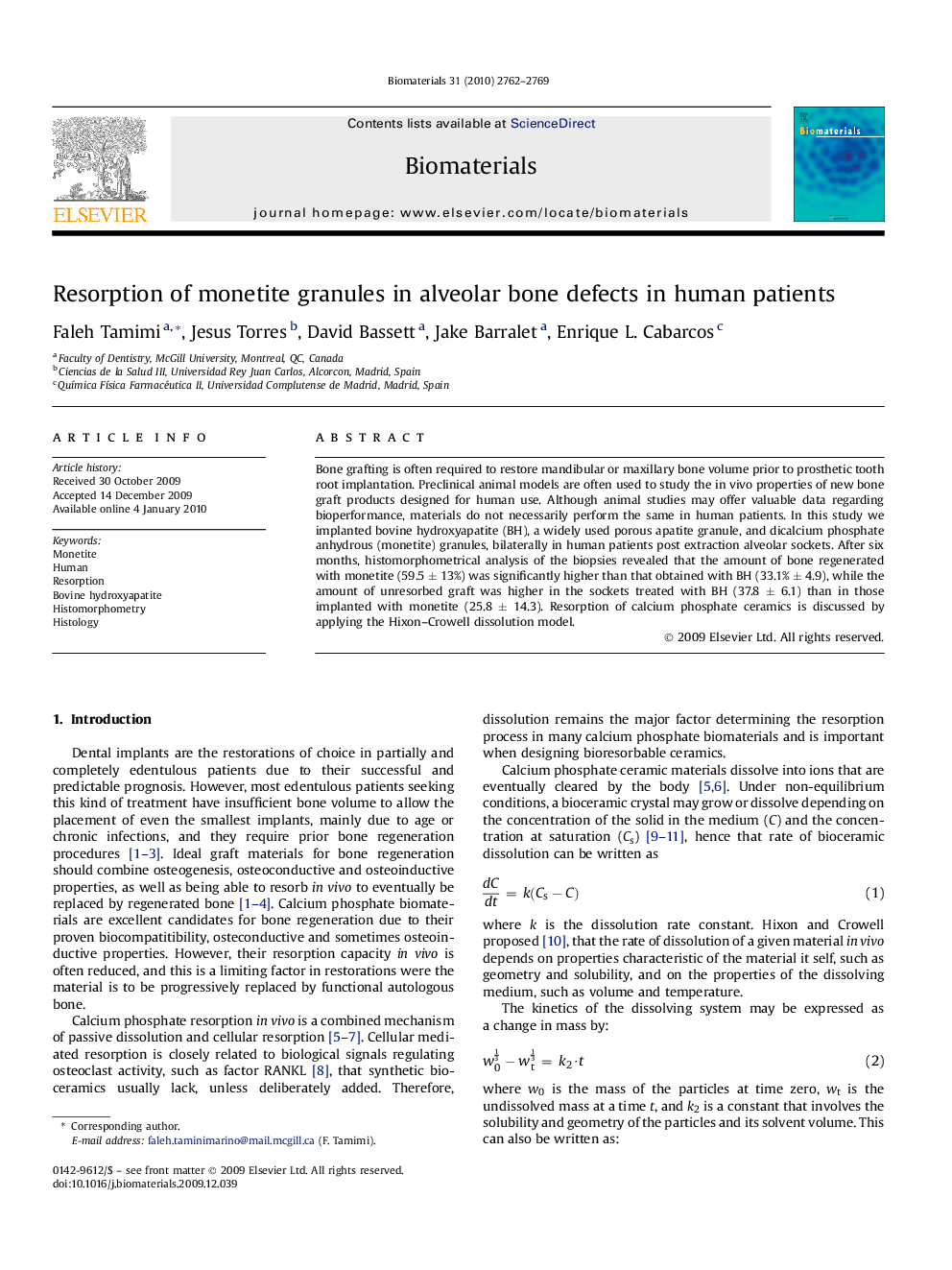| Article ID | Journal | Published Year | Pages | File Type |
|---|---|---|---|---|
| 8563 | Biomaterials | 2010 | 8 Pages |
Bone grafting is often required to restore mandibular or maxillary bone volume prior to prosthetic tooth root implantation. Preclinical animal models are often used to study the in vivo properties of new bone graft products designed for human use. Although animal studies may offer valuable data regarding bioperformance, materials do not necessarily perform the same in human patients. In this study we implanted bovine hydroxyapatite (BH), a widely used porous apatite granule, and dicalcium phosphate anhydrous (monetite) granules, bilaterally in human patients post extraction alveolar sockets. After six months, histomorphometrical analysis of the biopsies revealed that the amount of bone regenerated with monetite (59.5 ± 13%) was significantly higher than that obtained with BH (33.1% ± 4.9), while the amount of unresorbed graft was higher in the sockets treated with BH (37.8 ± 6.1) than in those implanted with monetite (25.8 ± 14.3). Resorption of calcium phosphate ceramics is discussed by applying the Hixon–Crowell dissolution model.
